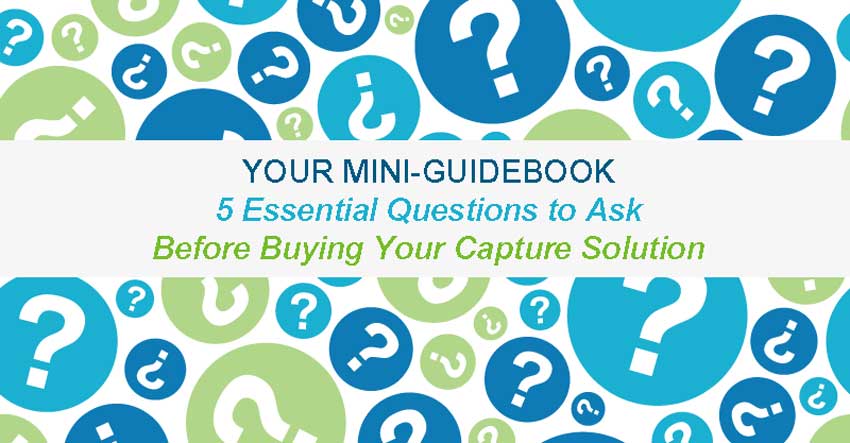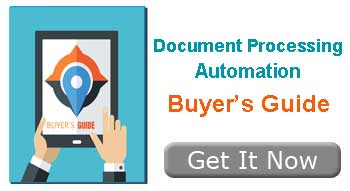WITH ALL THE CAPTURE OPTIONS, HOW DO YOU DETERMINE WHICH ONE IS RIGHT FOR YOUR ENTERPRISE?
Document processing providers face a number of important challenges in capturing data accurately and efficiently, especially from documents that are the exception to the rule and done “out of process.” In my last blog, we explored how the confluence of advanced data capture techniques combined with machine learning technologies is changing all that, allowing providers to expand the scope of automation faster and with less human intervention than ever before.
Capturing Competitive Advantage
For service providers looking to take the next step, the question now becomes: With all the capture solutions available, how do you know which one is right for you?
Here are some important questions to consider before you buy an advanced capture solution.
1. Will This Solution “Learn and Maintain Quality” over time?
Most capture systems require users to program every business rule. The more accurate you want your capture system to be, the more program coding required. Next-generation capture solutions use machine learning techniques and a rules-based approach that does not require coding each application from scratch — systems are smart enough to ‘read’ a batch of varied documents and build business rules based on that analysis. The system will learn and maintain its quality data results as information gathered during the input and capture process is used to build new rules automatically. Analysts are then free to refine as needed. Will the solution learn and maintain system quality as your scope and needs change?
2. Does This Solution Support Multistream Input?
BPO providers must deal with an ever expanding variety of input…and it’s not just paper. According to research conducted by AIIM International, organizations still process a lot of paper (about 40%), but the rest takes form in other channels like email, fax and legacy data streams. It simply does not make good business sense to receive an email or fax, which is already electronic to begin with, only to print it out on paper in order to scan it into the system. Does the solution handle the multistream flow of documents?
3. Will This Solution Support Mobile Input?
According to the Pew Research Center, 95% of American adults use a smartphone and 66% of Americans own both a smartphone and a tablet. As a result, mobile capture is quickly becoming an important differentiator for document processing providers. According to AIIM, 45% of companies that surveyed feel that mobile capture is vitally important. For example, more insurance providers are enabling claim adjusters with mobile capture so that they can photograph accident scenes and damage, then capture the accompanying documentation and upload the entire batch on the spot. Will your solution support mobile input?
4. How Will This Solution Ensure Privacy, Compliance and Information Governance?
Data privacy, regulatory compliance and information governance are three things that keep executives awake at night; and claims processing is often front-and-center with respect to those concerns. Service providers work hard to ensure the tightest integrity and highest accuracy in the data they collect and manage. But that can be difficult to do when the input streams fall outside the purview of optimized and automated capture systems. How will this solution ensure privacy and compliance of documents and information that are the exception to automated systems and ensure proper information governance?
5. Will The Solution Save You Money?
The new generation of advanced data capture solutions allows claims and applications processing providers, auditors and others to capture more information via automation than ever before. The confluence of machine learning and data capture gives enterprises the ability to design and implement business rules for automation faster and with less human intervention. The result is the elimination of a lot of costly and time-consuming data entry and verification. How well will the solution allow you to automate input streams that in the past required manual processing?
Moving Forward
Not all capture solutions are created equal; especially as you consider how advanced capture solutions can be used in new and more beneficial ways throughout your organization. Use these questions to help identify which features and capabilities are most important and which solution will best fits your needs. Look for providers and partners with the right mix of expertise, vision and capability that will allow you to capture the increasing value of advanced capture systems and strategies.
# # #
Guest contributor Kevin Craine is the author of the book Designing a Document Strategy and host of AIIM On Air, the podcast for AIIM International. He was named the #1 ECM Influencer to follow on Twitter. Find him at CraineGroup.com.





